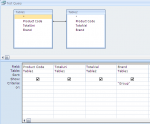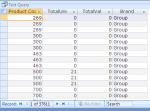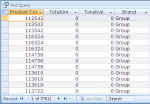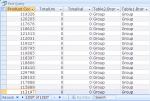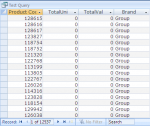I am joining two separate tables that I have downloaded from our host system into a query and linking them via a common denominator (Product Code). Every Product Code has three unique entries, one for Brand A, one for Brand B and one for Group (Brand A & B) however the Group entry is a Null Field.
When I join these tables in the query (using Product Code) and enter a condition of Is Null (to give me only Group results), I get three times the number of results from every Product Code.
Anyone have any ideas why this would be ?
All help appreciated and let me know if you need any more details.
EDIT:
Total Records in initial Table is 256,734.
When I join these tables in the query (using Product Code) and enter a condition of Is Null (to give me only Group results), I get three times the number of results from every Product Code.
Anyone have any ideas why this would be ?
All help appreciated and let me know if you need any more details.
EDIT:
Total Records in initial Table is 256,734.
Last edited:

